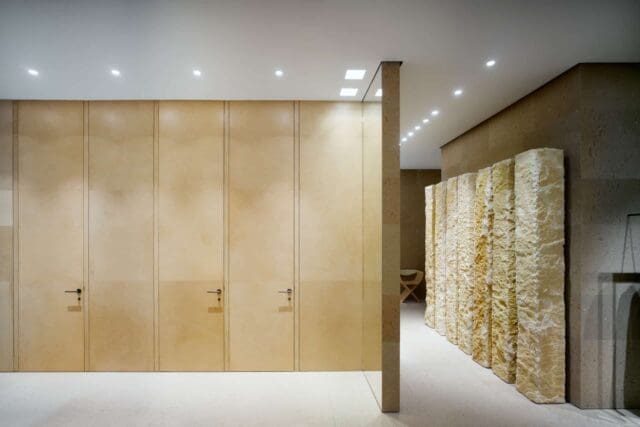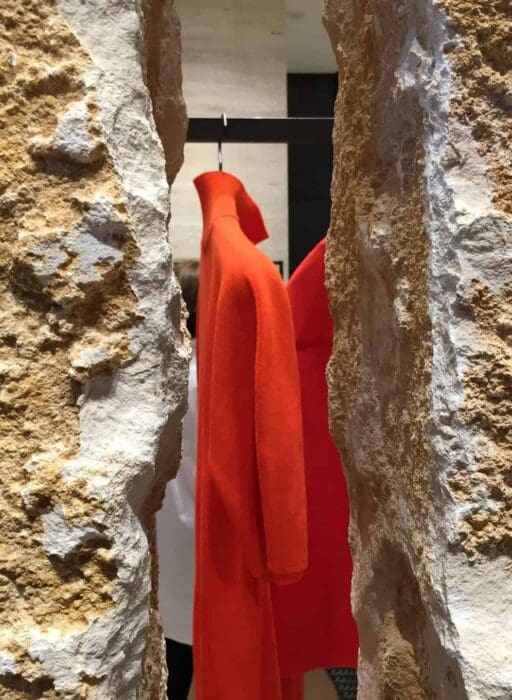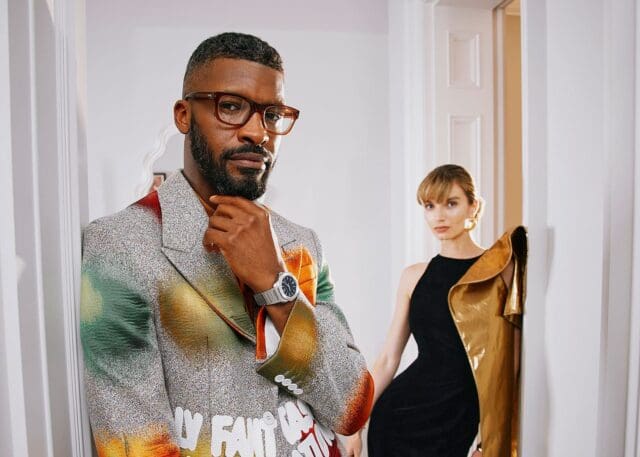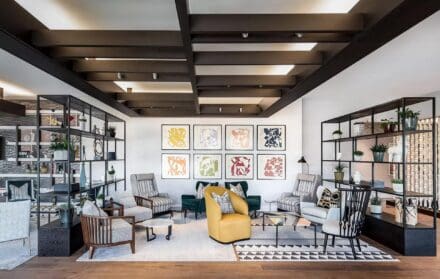
Claudio Silvestrin: In conversation with the godfather of contemporary minimalism
Architect to Elon Musk and Giorgio Armani, Claudio Silvestrin talks finding the soulful in the simple, interior design as a civilising force, and why it’s more important than ever for buildings to provide places of refuge
Claudio Silvestrin says that his job is to find poetry in people. Sadly, the acclaimed architect adds, this isn’t always easy. “There’s too much looking at Instagram [for ideas], too little risk-taking,” he laments. “People are influenced too much by the imagery they’re bombarded with, which forms a fashion of the moment. Right now people tend to want what they’ve seen already, because that’s reassuring. The pandemic hasn’t helped – people are more afraid, less willing to experiment. And creativity has to involve risk-taking, for the designer, for the client who’s putting up their money.”
Take, for example, the infinity pool, that staple of five-star hotels and holiday homes. Silvestrin, who established his eponymous architectural firm in 1989, all but invented it. His idea had the pool running from the inside of a house into an exterior space. And because keeping pool and building separate is the orthodoxy, that idea of unifying the two still meets resistance.
“People see what they see and that becomes the dogma,” says the 68-year-old. “It’s easier to move a mountain than it is to break some conventions. So the work for me becomes about finding the one per cent of poetry left in the client.”
It’s for that reason that, increasingly, Silvestrin’s clients tend not to be major corporations – though he’s designed resorts and malls, hotels and museums, and is now working on an airport in Siberia – but rather private individuals, with whom he has the most successful working relationships: the likes of Giorgio Armani, or Anish Kapoor, Elon Musk or, most notably, Kanye West. Indeed, if the maniac rapper and the laid-back, bespectacled purveyor of an intellectual-yet-still-warm brand of minimalism seem like unlikely bedfellows, it’s actually, according to Silvestrin, when curious minds meet that magic happens – reflexively conservative planning authorities permitting, he stresses.

Silvestrin designed West’s Manhattan apartment (above), which is more serene emptiness than the pimped-up pad you might have imagined. The pair were, at the time of interview, working on a huge, if closely guarded, project in Wyoming that, claimed Silvestrin – speaking before anti-Semitic comments led to West being dropped by brands including Adidas, Balenciaga and Gap – looks decades ahead into the possibilities for architecture. As he put it, you don’t need many clients to find satisfaction in work. “Just a few with the balls [to think originally] will do.”
“I was never interested in chasing celebrity,” says the Zurich-born, London-based Italian. “In fact, I’m not very ambitious. The clients I have just seem to have come to me out of the blue. But I do tend to attract strongly creative people and I notice that they’re not afraid of sharing with other creative people.

Victoria Miro Gallery © James Morris

Victoria Miro Gallery © James Morris
“I remember meeting [the artist] Richard Serra, who had a piece in this installation I did. He was a huge star and I was a young architect very few people knew at the time – and he shook my hand, a very strong hand from working with all that steel! And we had a chat like we’d known each other for a long time. There wasn’t that battle of the egos but an openness. People say ‘it must be really hard to work with creative people’, but actually it’s harder to work with people who aren’t creative.”
Indeed, says Silvestrin, it’s difficult to find satisfaction in a client relationship that isn’t mutually trusting. After all, he points out, these are times in which there are more individuals with more money, which encourages some clients to want to have more of a say in projects, regardless of their ability as architects.

“Sometimes the internet gives us the [false] impression that we’re doctors, but sometimes that we’re all artists,” he chuckles. Having studied under the celebrated graphic and industrial designer A.G. Fronzoni in Milan, Silvestrin continued his training at the Architectural Association in London. In 1986, he established Pawson Silvestrin Architects with fellow minimalism proponent, John Pawson. One of the pair’s earliest successes was the massive Neuendorf House in Mallorca. Convention would have been to paint the structure white, like so many other buildings on the sun-scorched island. Silvestrin persuaded the clients to make it reddish brown, matching the colour of the earth there.
Consequently, the building still looks fresh more than three decades on. It’s still sparse – Silvestrin says he’s never understood why anyone needs, say, 30 pairs of shoes – but the natural materials, the understated palette, the signature Silvestrin calm, mean that it’s anything but austere. These things matter to Silvestrin. Not because he’s down on the present state of architecture, though he does laugh that “we’re in the days of slowing down for [the discipline] – more than that, we’re putting the handbrake on.” Nor is it that he’s nostalgic. He recently re-watched Dr. No and realised how the Ken Adam sets still look 100 years ahead of our time despite the film enjoying its 60th birthday this year.

“It’s just that you don’t see the same daring now. But maybe it won’t be as it is now in 10 years’ time. It’s cultural, so it’s likely a phase that will pass,” says Silvestrin, who believes in architecture’s potential as a civilising force. No other creative discipline, he argues, has the totality of architecture, “since you don’t just look at it, but touch it, exist for much of your life inside of it.”
“I certainly suggest the possibility that architecture can bring positive emotions, that it can make life nicer, more interesting,” says Silvestrin, his focus being on designs that are meditative, more inclined to space and silence than busyness and boisterousness.
“Vocational architects go to bed thinking of how to solve a problem for a space with the intent of improving the quality of life of the client. Certainly, there are some buildings that I go into that make me feel depressed, or at least not joyful. There’s a heaviness and a coldness to these spaces, in the use of the materials, dark colours, not much natural light – but that feeling is very subjective and it would be monotonous if all architects felt the same.”

That’s why, Silvestrin concedes, his own singular style isn’t for everyone. He draws an analogy in saying that he’s more artisanal boutique than supermarket. Or, if he really had his way, perhaps more cathedral. It’s the one commission that’s evaded him so far, but which, he reckons, he’d find most fulfilling.
“Not least,” he jokes, “because there’s no need to deal with practical questions like ‘where do I put my socks and underpants?’ When you do a house, you have those kinds of things to think about. With a cathedral there’s nothing mundane. It’s pure light and space. It’s peacefulness. And no shaving cream.”

Giada store, Milan © James Morris

Why, Silvestrin wonders, don’t more people seek refuge from the 21st century’s maelstrom of white noise in architecture? Why do we not pursue peacefulness in buildings in an age of 24/7 screen time and pointless information flows? Why, he contends, are we seemingly only embracing more noise?
“Why is it that we’ve forgotten how to do stillness?”
Silvestrin doesn’t have the answer. Yet step inside one of his buildings and you can’t help but feel it’s a question we might do well to ask more.
Read more: Clive Myrie on reporting from Ukraine’s front line






